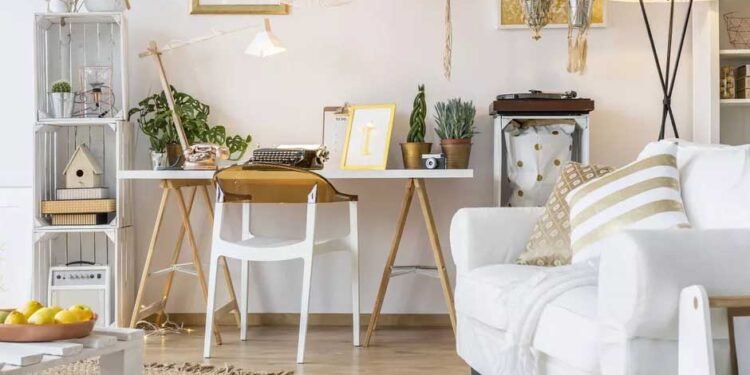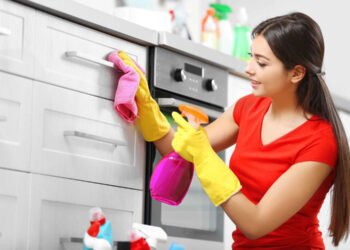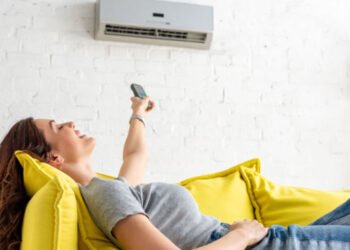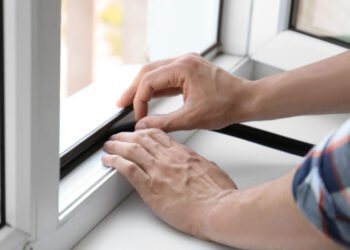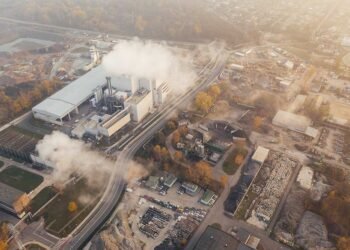Owning a vintage home rental offers a unique opportunity to provide tenants with a living space full of character and history. These properties, with their distinctive architectural features and timeless charm, attract a particular type of tenant who appreciates the blend of past and present. However, the maintenance of these historic homes requires a careful approach to preserve their beauty while ensuring they meet today’s living standards. It’s a delicate balance between maintaining authentic features and updating essential systems to ensure safety and comfort.
The upkeep of a vintage property goes beyond regular maintenance tasks; it involves understanding the specific needs and vulnerabilities of older structures. From the solidity of the foundation to the efficiency of the heating system, each aspect contributes to the overall well-being of the property. For landlords, this means being proactive in addressing potential issues before they escalate, ensuring that the property remains a safe and attractive option for renters.
Preserving the Charm
Maintaining the charm of your vintage rental property is crucial in keeping it appealing and functional for tenants. Regular upkeep is key to preserving the unique architectural details that define the character of your home. This involves consistent care and attention to both the interior and exterior elements. From the original wood flooring to the classic coving and crown moulding, each feature requires specific maintenance techniques to keep them in prime condition. It’s not just about aesthetics; it’s about safeguarding the heritage and ensuring that these timeless features continue to stand the test of time.
On the outside, the property’s facade, garden, and any original fixtures like wrought iron gates or stone pathways need regular checks to manage wear and tear. Weathering is natural for any home, but vintage properties are particularly susceptible to the elements. Seasonal maintenance, such as clearing gutters, inspecting the roof for damage, and ensuring that the garden complements the home’s historic aesthetic, are all vital tasks.
Avoiding Water Woes in Older Homes
The plumbing system in older homes can often be a source of concern for landlords and tenants alike. Vintage homes were built with materials and techniques that, while robust for their time, might not meet modern standards for efficiency and safety. Pipes made from galvanised steel or lead, common in older properties, can deteriorate or pose health risks, respectively. Regular inspections and maintenance of these systems are essential to prevent leaks, water damage, and other issues that could compromise the home’s structural integrity and the safety of its occupants.
Adopting a proactive approach to plumbing maintenance means not waiting for problems to arise but rather conducting annual checks to identify and address potential issues before they escalate. This might include updating fixtures, sealing leaks, and, where necessary, upgrading parts of the plumbing system to contemporary standards. Ensuring that the water pressure is regulated and that the drainage system functions effectively can also prevent many common plumbing problems.
Ensuring Electrical Safety in Vintage Homes
Maintaining the electrical safety of your vintage rental property is not just a matter of compliance; it’s about ensuring your tenants’ well-being and preserving your property. Older homes often come with their own set of electrical challenges, including outdated wiring systems that might not support modern appliances or meet current safety standards. This makes obtaining a landlord electrical safety certificate critical. It’s a comprehensive assessment that ensures your property’s electrical systems are safe and up to code, providing peace of mind for both you and your tenants.
If you’re unsure about the state of your property’s electrical system, or if it’s been a while since the last inspection, it’s time to request a quote from a professional service. This step is essential for meeting legal requirements and identifying potential issues before they become serious problems. A landlord electrical safety certificate is not only a document that proves your compliance with safety regulations. Don’t wait for an incident to happen. Taking proactive steps now can save you from costly repairs and legal complications in the future.
Balancing Comfort with Authenticity
Heating and insulation in vintage homes present a unique challenge. The goal is to provide modern levels of warmth and energy efficiency without compromising the property’s original features and character. Many older homes were not built with the same insulation standards as today, leading to drafts and higher heating costs. Updating these systems sensitively and sensibly is vital for improving comfort while preserving the home’s authenticity. This might include installing double-glazed windows that mimic the original style, adding loft insulation, or using draught excluders on antique doors.
At the same time, updating the heating system to a more efficient model can significantly enhance the property’s appeal and liveability. Modern heating solutions can be integrated into vintage homes in ways that respect their aesthetic, such as using decorative radiators that fit the period look or installing underfloor heating beneath original wooden floors. By carefully choosing heating and insulation upgrades, landlords can ensure their properties remain cosy and energy-efficient, appealing to tenants looking for the charm of a vintage home without sacrificing the comfort of modern living.
Common Electrical Hazards in Historic Residences
Living in a historic residence offers a unique blend of charm and history, but it also comes with its own set of challenges, especially when it comes to electrical systems. Many of these older homes were built before many of today’s electrical safety standards were in place, making them prone to certain hazards. Outdated wiring, overburdened electrical systems, and the lack of ground-fault circuit interrupters (GFCIs) in wet areas are common issues that can pose serious risks to both the property and its inhabitants.
Landlords and homeowners alike need to be aware of these potential dangers and take steps to address them. Regular inspections by a qualified electrician can help identify and mitigate risks, such as replacing or upgrading old wiring and installing GFCIs where necessary. Being proactive about electrical safety helps preserve the unique qualities of your historic home and ensures it remains a safe, comfortable place to live.
The Art of Period-Appropriate Renovations
Deciding when to update and when to preserve can be a complex decision for owners of vintage properties. Renovations that enhance functionality and safety are essential, yet it’s crucial to maintain the integrity and character that make a period home unique. Striking this balance requires a thoughtful approach, considering the aesthetic and historical value of original features and the demands of modern living. Updating electrical and plumbing systems, for instance, can be done in ways that do not detract from the property’s period charm.
On the other hand, preserving original architectural details, such as mouldings, fireplaces, and hardwood floors, can enhance a property’s value and appeal. It’s about knowing which elements to retain to keep the home’s historical essence alive. Sometimes, it involves using traditional materials and techniques for repairs to ensure that any updates blend seamlessly with the original design.
Maintaining a vintage rental property is a delicate balance between preserving its historical charm and ensuring it meets modern standards of safety and comfort. Your commitment to regular maintenance, sensitive renovations, and compliance with safety regulations not only protects your property’s architectural integrity but also enhances your tenants’ living experience. By taking proactive steps in these areas, you ensure that your vintage rental remains a cherished home for years to come, blending the best of historical character with contemporary living standards.
